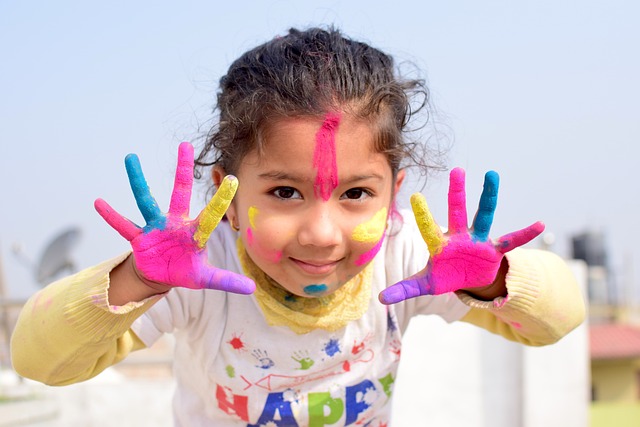Children’s cognitive, emotional, social, and physical development are all aided by art and music. These artistic mediums give kids special chances to express themselves, use their imaginations, and learn about the world. This article explores the deep effects of music and art on children’s development, emphasizing the various ways in which these pursuits foster developing bodies and minds.
Cognitive Development
Children’s cognitive development can be greatly enhanced by the use of art and music. Children who participate in artistic endeavors like painting, sculpting, and drawing are better able to think critically and solve problems. Children learn about cause and effect, spatial relationships, and design principles, for example, when they experiment with different shapes or mix colors to create new shades. These encounters foster their capacity for reasoning and analysis as well as their capacity for creative thought.
Contrarily, it has been demonstrated that music directly affects brain development, especially in areas linked to language and math. Children who receive music instruction frequently do better in math and reading, according to studies. This is due to the fact that music aids in children’s recognition of rhythms, patterns, and sequences—all of which are essential to mathematical reasoning. Learning to play an instrument also calls for coordination, memory, and focus—all of which support cognitive development.

Emotional Development
Children can express and explore their emotions through art and music. Children can express emotions and ideas through art that they might not be able to articulate verbally just yet. For instance, a child may represent sadness with dark colors or happiness with bright ones. Children can benefit from this therapeutic process of externalizing emotions through art, which enables them to comprehend and control their emotions.
Emotional development is also significantly influenced by music. A vast spectrum of emotions, from happiness and excitement to serenity and introspection, can be evoked by listening to and performing music. Children can process and express complex emotions through music. Playing an instrument, dancing, or singing can also give kids a sense of achievement and increase their self-esteem, especially when they receive praise for their hard work.
Additionally, music can be a reassuring influence that helps kids deal with difficult circumstances. For example, lullabies have long been used to calm young children and babies, fostering a sense of calm and security.
Social Development
Through promoting cooperation, dialogue, and cultural awareness, art and music also promote social development. Children learn the value of cooperation and teamwork through group art projects like collaborative sculptures or murals. They develop their ability to communicate, compromise, and value the contributions of others as they collaborate to produce something worthwhile.
Children who participate in choirs, bands, or orchestras learn how to collaborate with others in the field of music. To produce a cohesive performance, they have to blend their sounds, pay attention to their peers, and follow a conductor. Children gain valuable social skills from these experiences, including cooperation, empathy, and active listening.
Children’s worldview is also expanded when they are exposed to a variety of artistic and musical expressions from other cultures. It helps them see the beauty and worth of various customs and viewpoints and cultivates an appreciation for diversity. Since it equips kids to live in a globalized world with respect and openness, cultural awareness is a crucial part of social development.

Physical Development
Participating in musical and artistic endeavors also enhances physical development, especially in the domains of coordination and fine motor skills. Children’s small hand and finger muscles are strengthened by the precise hand movements needed for art projects that involve cutting, gluing, drawing, or painting. For activities like writing, buttoning clothing, and tying shoelaces, these fine motor skills are essential.
Playing a musical instrument, such as striking a drum, pressing piano keys, or plucking guitar strings, also improves dexterity and hand-eye coordination. Simple activities like dancing to music or clapping in time with a beat can help younger kids develop their gross motor skills, balance, and coordination.
Movement exercises and music can also help people become more physically fit. Specifically, dancing is a great way for kids to have fun and stay active. They gain strength, flexibility, and endurance as a result of being inspired to use their bodies creatively.
Creativity and Imagination
The development of imagination and creativity in children is arguably one of the most significant effects of art and music. Children can freely explore their ideas through art and music in a world that is becoming more and more reliant on technology and structured education. Children are using their imaginations and honing their creative thinking skills whether they are creating a simple melody or painting a fantastical landscape.
In addition to being crucial for artistic endeavors, this inventiveness is a useful life skill in other contexts. Innovative ideas, problem-solving, and situational adaptation are all made easier for creative thinkers. We are fostering children’s creative potential, which will benefit them throughout their lives, by encouraging them to participate in music and art.

Conclusion
A well-rounded education must include both art and music because they provide children with numerous advantages that go well beyond the classroom. These creative pursuits have a significant and wide-ranging effect on children’s development, from social and physical growth to cognitive and emotional maturation. Art and music contribute to the development of well-rounded people who can think critically, express themselves, and make significant contributions to society by encouraging creativity, expression, and cultural awareness. Giving kids lots of chances to participate in art and music is essential as we continue to acknowledge the value of these subjects, as it promotes their overall development and develops their potential for the future.


